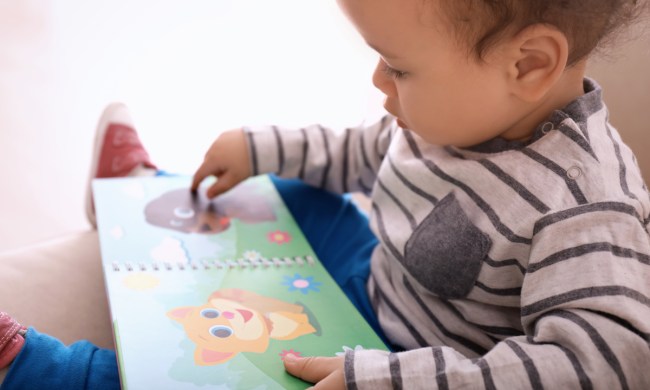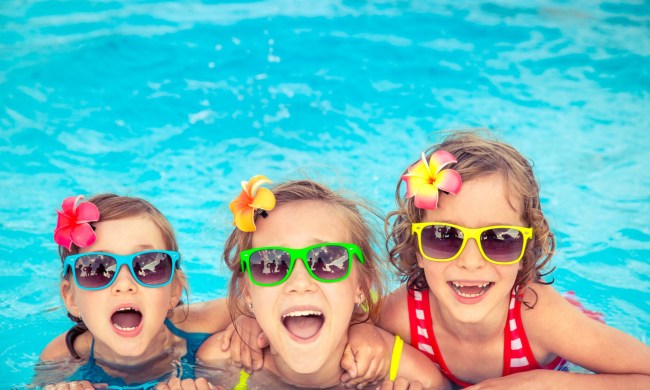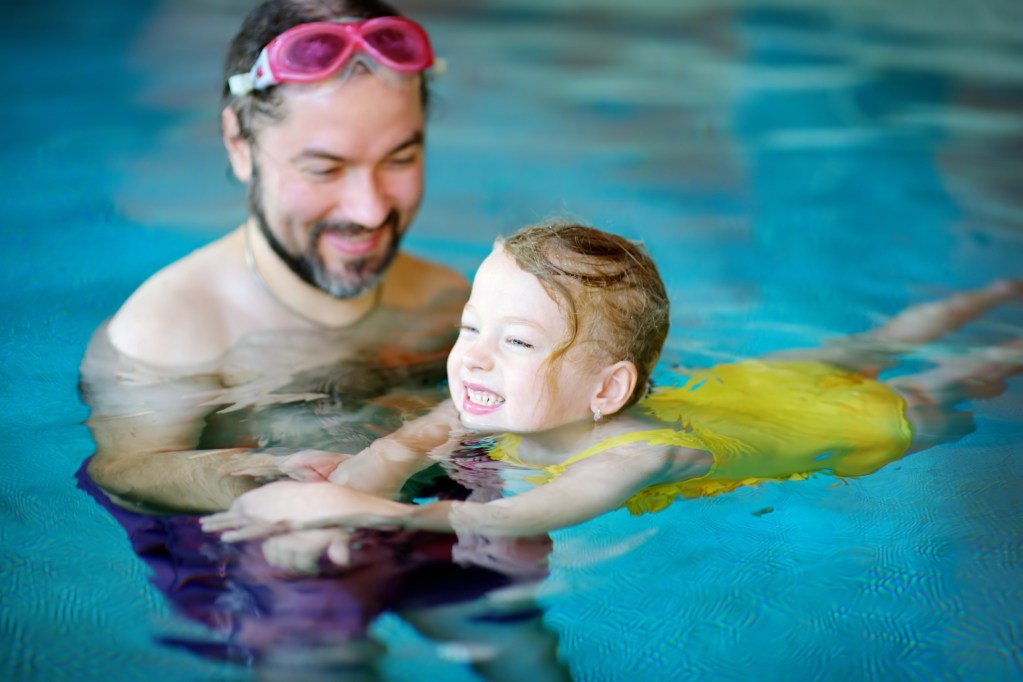
While watching your child jump into any open water could be a bit, parents don’t want their child to be afraid of the water. Swimming is a fun activity that helps promote a healthy lifestyle, a great way to stay cool in the hot summer months, to get indoor exercise during the winter, and it’s a life skill to have. Typically, the recommended age for lessons is 4, but there’s really no incorrect age for how to teach a child to swim.
Swimming is an important lesson to learn for your kid’s enjoyment and especially for their safety. We’ll share great methods and fun ideas on how to teach a child to swim so they’ll become strong, happy, and confident fish in the water.
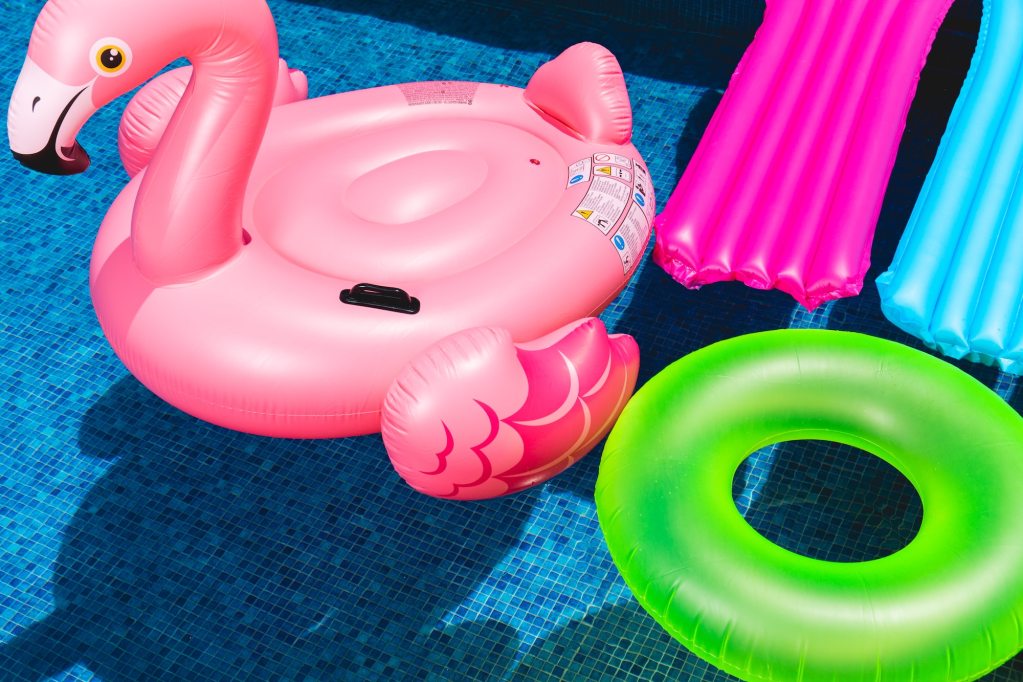
Make the water a fun space
- Create a welcoming space for your child to get comfortable.
- Make it seem more like playtime than swim time.
Water is intimidating regardless of whether it’s a pool, lake, or ocean, so it is important to make your child feel comfortable around water, wherever you are. If they haven’t been in the water before or have had a bad experience, you should do your best to make it seem fun.
Fill up the pool with toys, floaties, and people they love and feel safe with. Your child will feel comforted by having you and others around them. The bright, fun toys floating around will give them something to look at and make it feel more like playing than swimming.
Once your child realizes how fun the water is, start taking the first steps toward learning how to swim. Start off slow, and always make them feel safe and supported. Your child will be a strong swimmer in no time with a little patience and practice.
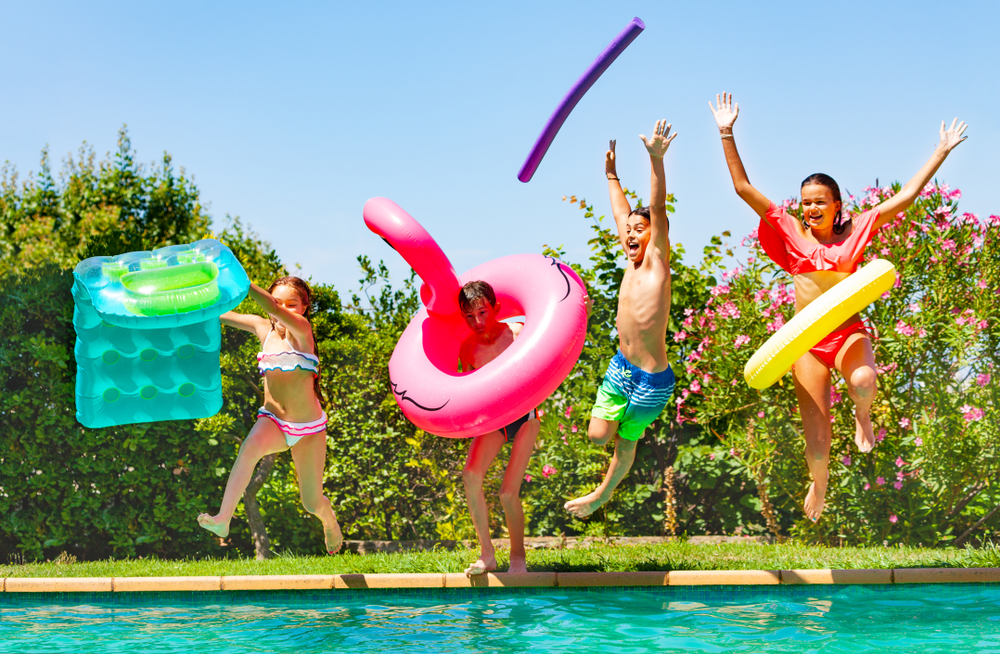
Floats put the fun into functional
- Start out with bigger pool floats.
- Work your way toward smaller floats, like arm floaties.
Having fun pool floats around is an easy way to make your child feel safe. If they are still getting used to the water, start them out on big floating rafts or tubes that support them completely. After they feel more comfortable, provide them with arm floaties to help keep them above water. Use pool noodles or other long floats that will support their body while keeping their hands free so they will be able to practice easy strokes like the breaststroke.
Floats are a great way to slowly introduce your child to the water. They are like the training wheels on their bike. Once you feel like your child is ready to try out swimming without the support of floats, remove them and help them get ready for swimming on their own.
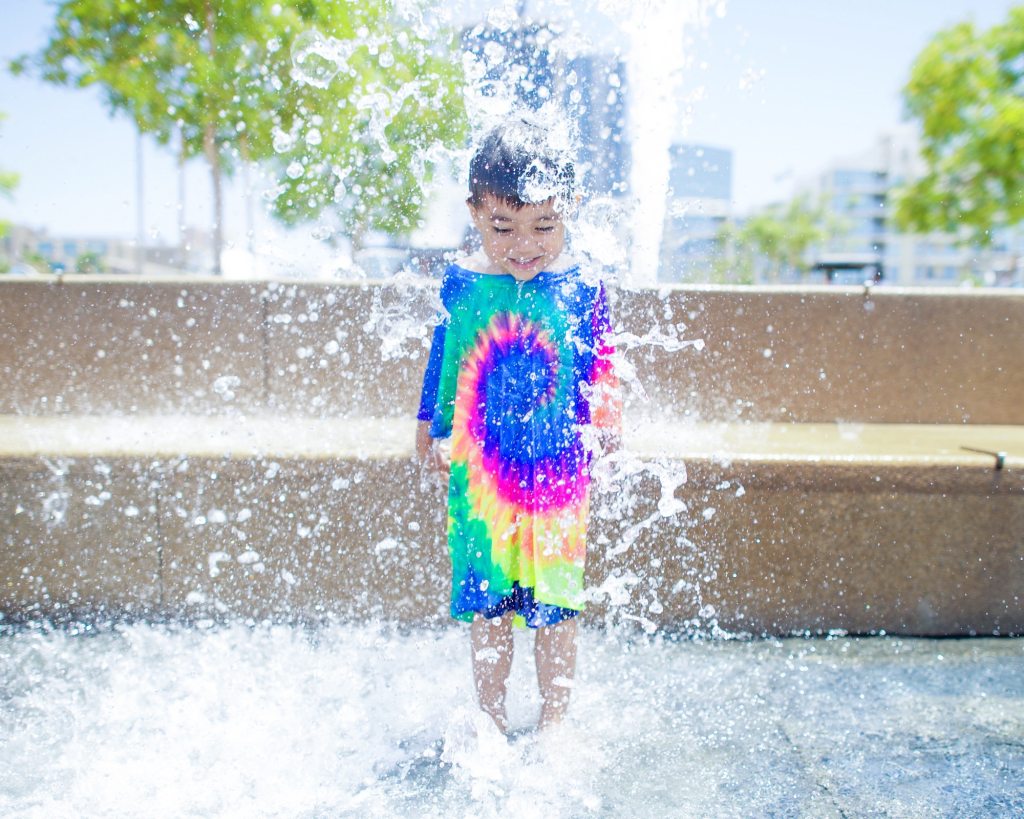
Show them what it’s like without a float
- Once you take all floats away, you become the float.
The floats need to come off at some point. Even if your child may not like it, it is an important step to show them they can do it on their own. Once you take away the floats, you need to be your child’s support system. It is important to hold on to them at all times while teaching them how to do proper swimming strokes. With practice, they will be able to start swimming short distances on their own. Once those short distances get longer and stronger, you’ll have a strong swimmer on your hands.
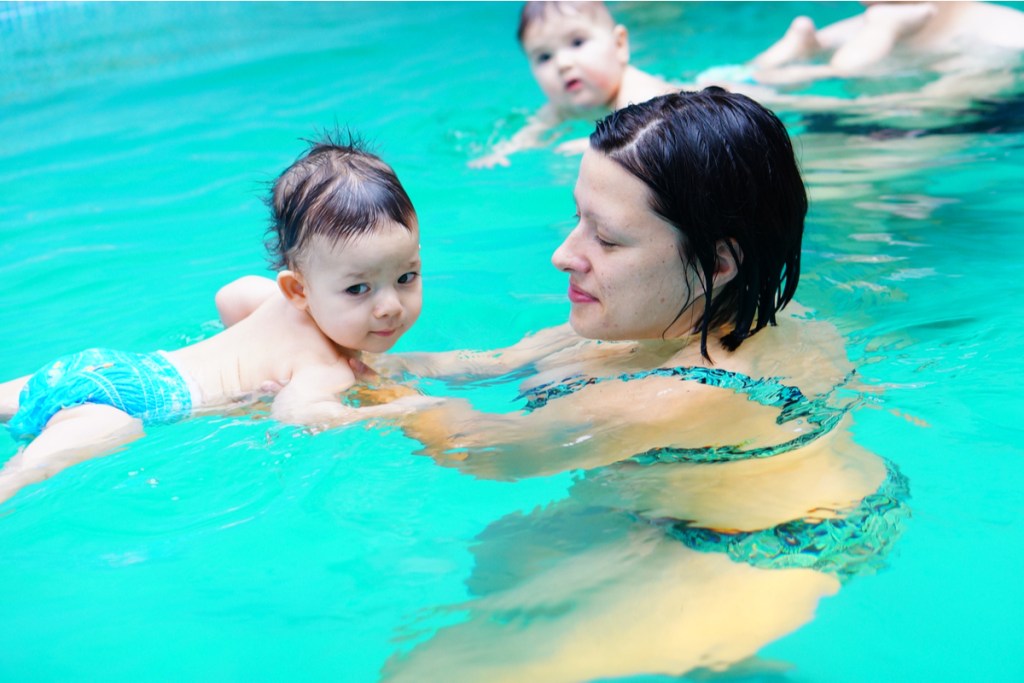
Teach them how to hold their breath
- Start with their face not even in the water.
- Go slowly, let them take their time.
- Practice blowing bubbles to start.
- Have them work their way to being fully under the water while holding their breath.
Swimming requires some level of holding your breath, so it is an important skill your child needs to learn. Show them above water first and let them try it out for a few seconds at a time. Help your child get ready by having them blow bubbles underwater while holding their nose. Take it further by having them practice holding onto the pool from the side and holding their breath as they go under.
If you are in open water, or more shallow water, they’ll be able to practice sticking their face in for short periods and come back up for air when they need to. They’ll learn how long they could hold their breath and how to regulate their body on their own when they get to that point.
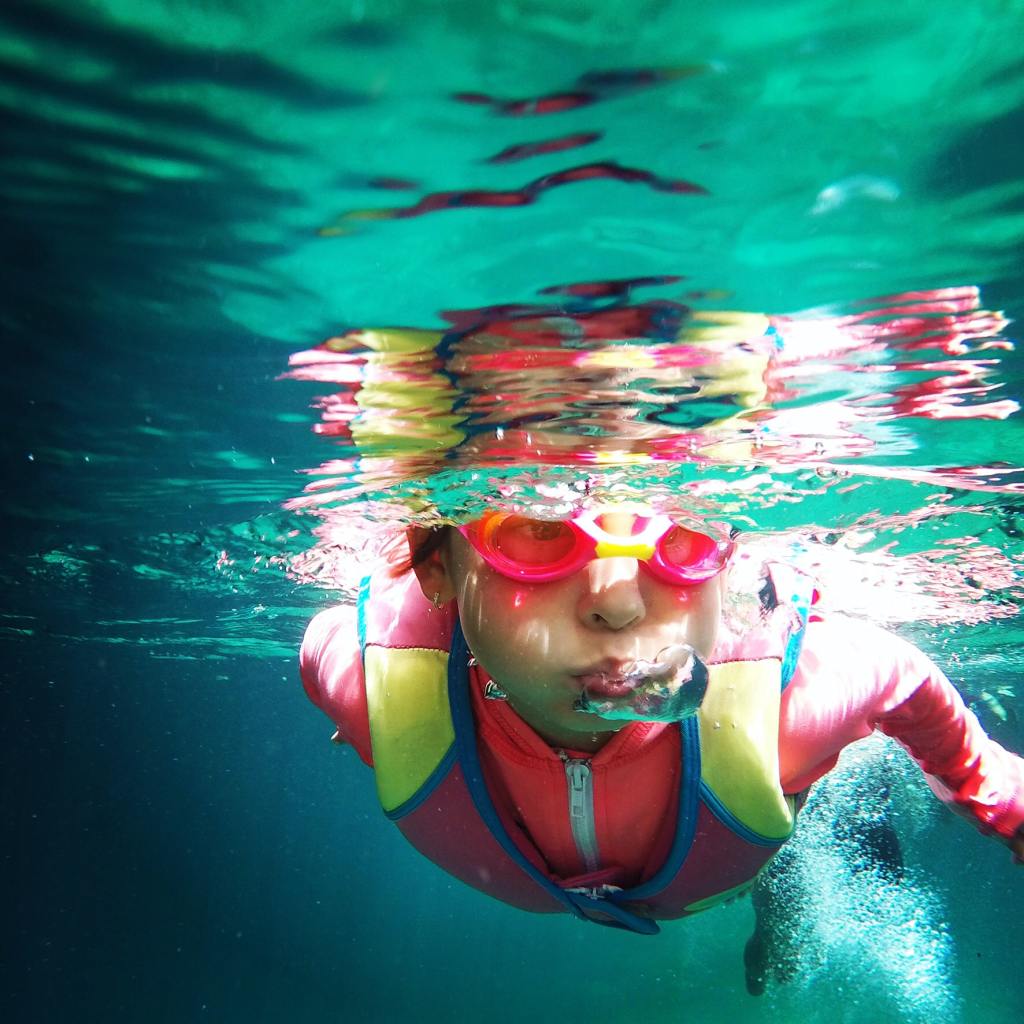
Give them equipment to help as needed
- Have goggles so they don’t worry about their eyes.
- Grab them nose plugs to help with that part.
Another great way to make your child feel more secure and safe during swimming lessons is as simple as a pair of goggles. Your child will feel more in control when they still clearly see underwater. Goggles prevent any irritation or stinging to your kid’s eyes and will be a fun way for them to see how cool the underwater world looks.
If your child is having trouble holding their nose, get them a nose plug so they don’t have to worry about it. One less thing for them to do while they are learning, and they could ditch the help once they get the hang of it and feel more confident.
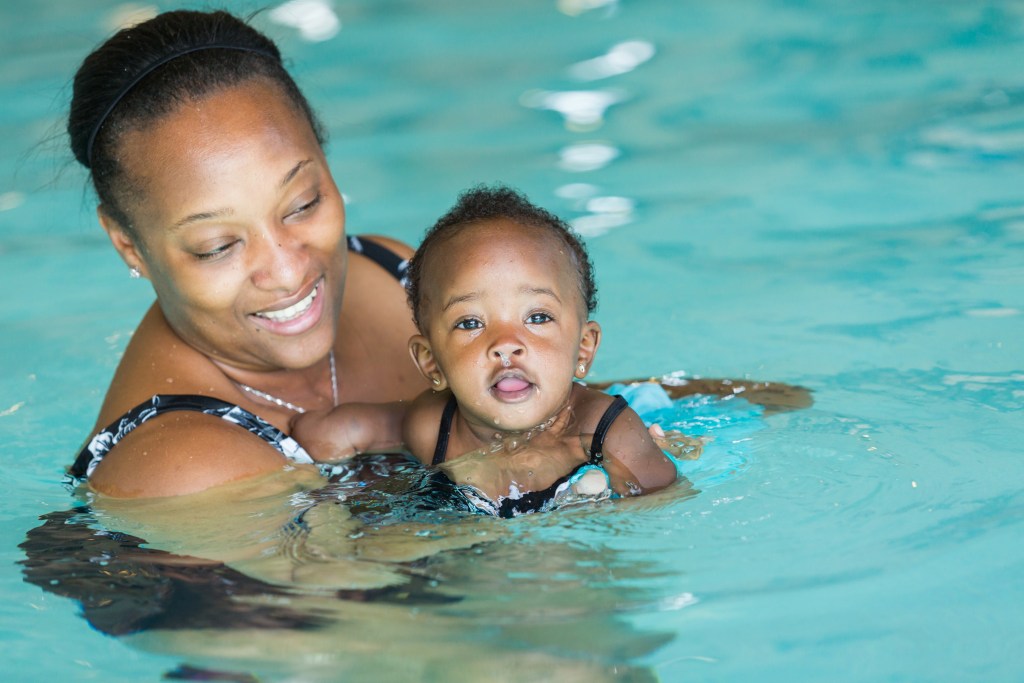
Tips to keep in mind as the teacher
We all want our kids to succeed, but we have to remember that they are children learning something for the first time. If your child is showing signs of being afraid, keep these thoughts in your head.
- Your kid might cry – Some children will just cry about it. Like when you give them the wrong color plate. Determine if they are crying because it’s new or because they are truly scared.
- Be consistent – If you only do swim lessons once a week during the summer, your child may take forever to learn. If you want to teach them, teach them. Same time, same routine, same days, for as long as it takes until they get it.
- If you become too aggravated, have someone else do it – Know when to give up the power. If you and your child aren’t having a bonding experience, and you’re feeling overwhelmed yourself, your kid isn’t going to learn. There are plenty of classes where you could sit and watch your child learn with a group of kids from a professional. Just remember this when it comes time to teach them how to drive.
Swimming is an important lesson every child (and adult) should learn. It will allow them to enjoy pools and oceans while always staying safe. Learning to swim will instill a new level of confidence in your child that will carry over into other areas of their life.
There are many great methods and trusted ideas to help your kid feel more comfortable and confident in the water. Regardless of what methods you use, you will love seeing your child develop and improve their swimming skills each and every day. And you’ll be able to relax just a touch more when you see your child get ready to do a cannonball.

